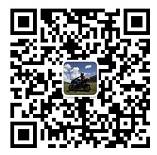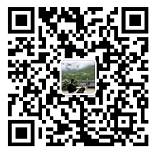According to a new study, more than 100 bones and teeth of dinosaur cubs "accidentally" found in the Arctic of Alaska show that dinosaur cubs were toddlers in this cold area about 70 million years ago.
The researchers say it is surprising to find evidence of prehistoric breeding grounds in such a cold place. Even in the warm Cretaceous (145 million to 66 million years ago), the average monthly temperature in Alaska was only about 43 degrees Fahrenheit (about 6 degrees Celsius), the researchers said. For about four months of the year, these dinosaurs had to live in the dark to cope with the snowfall.
Gregory Erickson, a paleontologist at Florida State University and one of the study leaders, said that the prince Creek formation in northern Alaska where fossils were found was "the northernmost place where dinosaurs once lived". "I don't think they could live farther north," he said, because the area now known as Alaska was closer to the Arctic than it is now.
After analyzing the teeth and bones of the cubs, the research team determined that the remains belonged to seven different dinosaurs. Eriksson said it was found that dinosaurs probably lived in cold areas all year round because the cubs were too small to migrate annually soon after hatching. He added that if dinosaurs and their parents lived in Alaska all year round, they might be constant temperature, or constant temperature - a feature that keeps them active even if the temperature drops.
Eriksson said that after oil workers found dinosaur bones there in the 1950s, researchers knew that dinosaurs once lived in polar regions. In the following decades, scientists at the northern Museum of the University of Alaska found the remains of young dinosaurs in the state.
"Our work is like a gold rush," said Patrick Druckenmiller, a professor of geoscience at the University of Alaska and director of the northern Museum, who is also co director of the study“ We found small bones in sediments like the ocean. " Undergraduate and graduate students spent thousands of hours on this project. The project found a variety of dinosaur cubs of herbivorous dinosaurs, including duck billed dinosaurs, hornnose dinosaurs, strange dragons and pachycephalosaurs. They also found the remains of carnivorous dinosaur cubs, including Tyrannosaurus Rex, acrophobia and ornithosaurus (ostrich like dinosaurs).
Eriksson said that the Arctic winter in Alaska was probably the hardest, especially for herbivores, whose food was either covered with snow or died.
"We don't know how they spent the winter," Eriksson said. Some small dinosaurs might dig a hole in the ground to hibernate, but larger dinosaurs, such as duck billed dinosaurs and Tyrannosaurus Rex, could not do so. "Maybe they have to carry it as hard as elk or musk ox," he said. Anyway, they survived. "

Address:Kechuang 2nd Road, Bancang Industry Park, Yantan District, Zigong, Sichuan, China
Tel:+86 18349977204
Mobile:+86 13330334360
QQ:806556604
Email:806556604@qq.com


Mob:+86 18349977204 Mob:+86 13330334360 Mob:+86 13330809955
|
Name: |
Content: |
Tell us your needs |
|
Your phone: |
© 2021- Zigong Yunyi culture and Art Co., Ltd ICP:蜀ICP备2020034946号-2